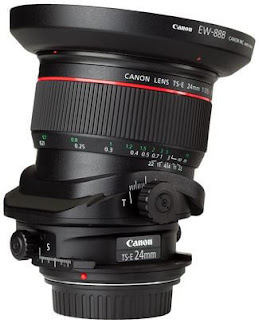When I was a layman, I still do not understand what the lens function on the DSLR / mirrorless? Why changeable? And most importantly, why is the price so expensive even far beyond the price of the camera itself? After I was deep enough photography, I finally understand all these things. In fact, I consider the lens is the most important part of the camera and determine whether or not a good image.
There are many types of lenses that vary in terms of focal length and there are certain features such as the macro lens and tilt-shift. Here are 10 different types of lenses DSLR / mirrorless. I'm sorry, most of the lenses in the illustrations are the Canon brand because that's all I know. Immediately we see the first:
1. Lens Fix
Fixed 50mm f / 1.8 lens (Wikimedia) The results of his photograph (sample-image.com)
A fixed lens is a lens that has a focal length that can not be changed. The advantages of the lens fix compared to the zoom lens is a larger lens opening so that the image is brighter and bokeh effect is more stable. The fixed lens is suitable for street photography and portrait photography. Focal length range of fix lens on the market ranging from 14mm to 200mm. There are actually up to 800mm, but I put it into a telephoto lens. Although there are many variants, the focal length commonly used for shooting is usually 24, 35, 50, and 85mm.
2. Wide-Angle Zoom Lens
Canon EF 11-24mm f / 4L USM lens Photograph results
The wide-angle zoom lens is a zoom lens that has a focal length of 10 to 24mm. These lenses are commonly used for landscape photography and architecture photography because of the wider lens point of view so more objects can fit into the photo.
3. Standard Zoom Lens
Canon EF-S lens 18-55mm f3.5-5,6 IS STM and photograph results
The standard zoom lens is commonly called lens kit because it is generally included in the camera sales package. Often also called "multi-talent lens" because it has a focal length from the width (18mm) to telephoto (200mm). So it is ideal for beginners due to its flexibility. There is a drawback of this lens, which is expensive (especially the lens "sapujagat") and small aperture (starting from f / 3.5.If zoom is even narrower until f / 5.6) so the images tend to be darker and bokeh less than the maximum.
4. Telephoto Zoom Lens
Canon EF 200-400m f / 4L lens IS USM Extender 1.4x
A telephoto zoom lens is a zoom-enabled lens with a focal length of 100mm to 400mm. This lens is suitable for wildlife photography and sports photography. Generally, the price of this lens is expensive, some even reach hundreds of millions of Rupiah.
5. Telephoto Lens
Canon EF 800mm f/5,6L IS USM
The telephoto lens is a fixed lens with focal length above 200mm. Its trademark is its size is very large to be more like a cannon (English: canon). The price is also very expensive ranging from tens to hundreds of millions of Rupiah. This lens is used for wildlife photography and sports photography.
6. Macro Lens
Canon EF 100mm f/2,8L Macro IS USM
A macro lens is a lens with the ability to focus on objects closer than other lenses, making it suitable for photographing small objects such as insects and plant parts. There is a special genre that matches this lens is macro photography.
7. Tilt-Shift lens
Canon TS-E 24mm f/3,5L II
Example of tilt shift lens before (left) and after (right)
The tilt-shift lens is a tiltable and tiltable lens. The ability to make the lens can create different perspectives, for example straightening the perspective of the building and create effects toy camera. These lenses are suitable for architectural photography or create unique effects.
8. Fish-Eye Lens
Lens Canon EF 8-15mm f / 4L Fisheye USM
Fish-eye lens is a lens with high distortion because the focal length is very short, ie below 10mm, making it super ultra wide. You may like it or hate it because the price is quite expensive and has a high distortion. But for the users of fish-eye lenses, the distortion is precisely sought after the results of the image becomes unique.
9. Lens Extender / Teleconverter
Canon lens extender EF 1.4x
The teleconverter lens is the lens used to extend the lens focal, making it easier to photograph distant objects. But there are drawbacks, namely decreased photo sharpness. Usually capable of extending focal from 1.4x and 2x. Suppose we put a 200mm lens on a 2x teleconverter, then the final focal length is 200 x 2 = 400mm.
10. Lens Adapters
This lens is used to install the lens of other vendors. For example Sony lenses to Canon cameras. Or the EF lens (for Canon DSLR) is paired with the EOS M (Canon's mirrorless camera).









